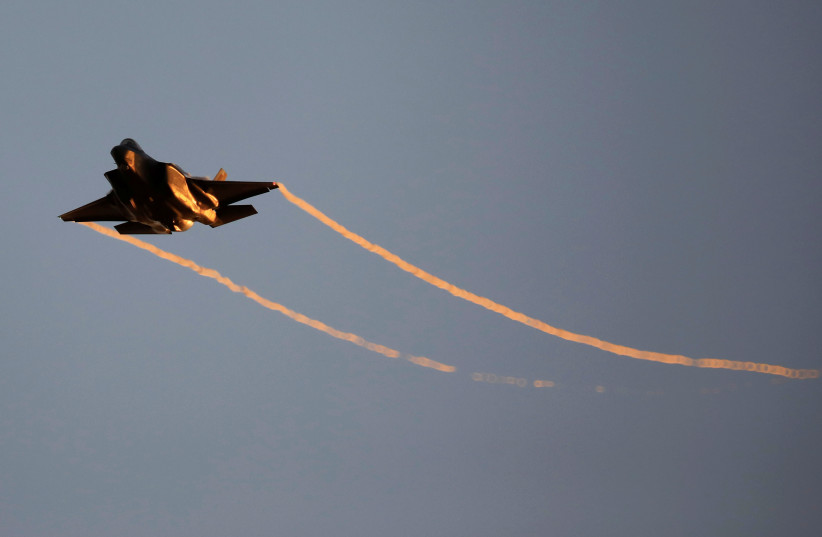A small asteroid half the size of a fighter jet is set to have an extremely close flyby with Earth on Friday, January 27, passing just a couple thousand kilometers above the planet's surface, according to NASA's asteroid tracker.
The asteroid in question has been designated 2023 BU and is one of the newest asteroids discovered and named in the new year, according to the Center for Near-Earth Object Studies (CNEOS) at NASA's Jet Propulsion Laboratory (JPL).
How big is the asteroid coming toward Earth in 2023?
Asteroid 2023 BU is very small, with a diameter ranging between just 3.9 and 8.4 meters.
To put that in perspective, at most, the asteroid would be around half the size of a fighter jet, such as the F-35.
Interestingly, this asteroid's speed is also unclear. NASA provided two estimates, one for its relative velocity, meaning its speed during its close approach to Earth, and its velocity in space unhampered by Earth.

This is something usually included in the CNEOS data but the numbers are usually very close to one another. Here, though, they widely differ. Its velocity unhampered by Earth is 2.43 kilometers per second, or 8,748 kilometers per hour. But upon its close approach, that velocity shoots up to 9.26 kilometers per second, or 33,336 kilometers per hour.
Will an asteroid hit the Earth in 2023?
It likely won't hit the planet, but it still will be incredibly close.
Most Near Earth Objects (NEOs) that are reported as passing close to the Earth actually pass by at well over a million kilometers away.
There is a reason for this though. While on a practical level, it is considerably far, 1-2 million kilometers can still be considered very close on a cosmic scale of things.
That being said, the Moon tends to orbit the Earth at an average distance of 384,000 kilometers, so generally speaking, anything that passes by farther than that is usually not much to write home about.
In addition, there are also other markers, like several satellites that orbit in Medium Earth Orbit such as the GPS satellite system, which is around 20,200 kilometers above the Earth.
But asteroid 2023 BU is actually going to fly past all of these things and get even closer to Earth.
According to NASA's estimates, asteroid 2023 BU is set to fly above the Earth at a distance of either 10,000 kilometers above the Earth or just 3,500 kilometers away.
This is very close. In fact, it is so close that NASA CNEOS has actually given it a rarity rating of 2 as opposed to 0.
And while it probably won't impact the Earth, there is still a chance it would. After all, as noted by researchers from Purdue University and Imperial College London, eight-meter-wide asteroid impacts happen around once every five years.
Of course, if it did impact, it won't cause any damage at all. While asteroid impacts can be devastating, that only works if they are big enough to survive much of the trip through the atmosphere.
At just eight meters in size, asteroid 2023 BU is likely to just burn up. Even if it doesn't, it would probably explode in the atmosphere several kilometers above the Earth.
For comparison, consider some other recent asteroid impacts.
Back in March 2022, a small asteroid around half the size of a giraffe known as 2022 EB5 hit the Earth just hours after its discovery. But given how small it was, it didn't exactly result in any damage.
More recently, in late November 2022, tiny asteroid 2022 WJ1 harmlessly exploded into fragments that scattered around Lake Ontario. NASA had predicted that this small meter-long asteroid would impact this location and knew there wouldn't be any harm from it.
Another asteroid impacted the Earth in 2013 above Chelyabinsk, Russia. This one was bigger and caused a loud explosion in the sky, the shockwave of which shattered thousands of windows but didn't actually cause any casualties, barring a few who sought medical aid from the shattered glass.
Can I watch the asteroid coming toward Earth in 2023?
Yes, you can. It will be close enough that viewing the asteroid is possible, at least online.
Luckily, the Virtual Telescope Project has set up a livestream, which starts streaming Thursday evening. So stay tuned!
